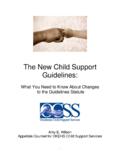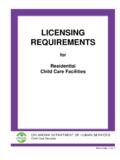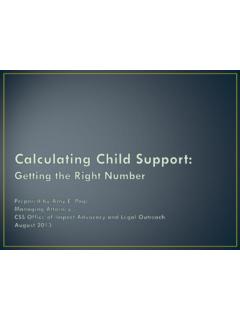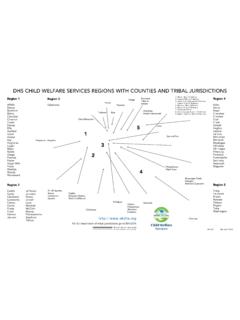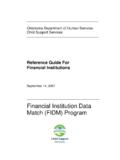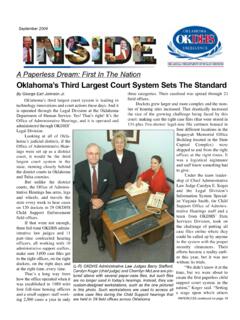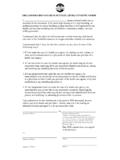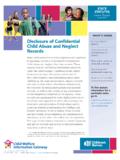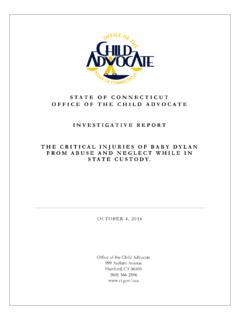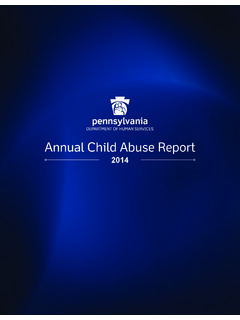Transcription of Questions and Answers for Parents - okdhs.org
1 child WELFARE SERVICES. Questions &. Answers for Parents OKLAHOMA DEPARTMENT OF HUMAN SERVICES. child Welfare Services What are child welfare services? The Oklahoma Department of Human Services (DHS) is responsible for providing child welfare services. DHS child Welfare Services focuses on protecting children from harm and helping families through situations that cause their children to be unsafe. DHS child welfare specialists (CWS) are required by law to respond to reports of child abuse and neglect . When a report of abuse or neglect is received, the specialist contacts the family to determine whether children in the family are safe. How did DHS get my name? Oklahoma law requires every person to report suspected child abuse or neglect to DHS when he or she believes a child has been abused or neglected by someone responsible for the child .
2 The name of the person reporting the suspected child abuse or neglect is confidential by law, and that is why you will not be told who reported it. Reports of sus- pected child abuse or neglect may be made anonymously. Anyone may call DHS to request child welfare services. What happens after a report of suspected child abuse or neglect is received? Under Oklahoma law, DHS determines what response is required to a report of suspected child abuse or neglect . A child welfare specialist (CWS) is assigned when necessary to conduct an assessment or investigation of the reported allegations. The CWS initiates contact with each child named in the report and talks to members of the household, family and others as necessary to complete the assessment or investigation.
3 3. What is the difference between an assessment and an investigation? An assessment is conducted when the report concerns abuse or neglect that is not a serious and immediate safety threat. The assessment process includes separate and joint discussions with all family members and may include information gained from other sources to determine actions or interventions that may be needed to help you keep your child safe. The assessment process gives family members a chance to provide information about what they believe will help the family. Other people are contacted as necessary for additional information to assist the CWS. in safety decisions about your child . When your family needs services, you will be provided information on services in your area and services that DHS provides.
4 An investigation is conducted when the referral concerns suspected child abuse or neglect that is serious or could be dangerous, or when there have been previous reports of abuse or neglect . During an investigation, the child welfare specialist (CWS) talks with you and your child separately, when your child is old enough. During the assessment or investigation, the specialist may need to check your child for injuries, and you may be asked to have a doctor examine your child . The specialist also talks with other people who know you and your child to find out more about your family, and it is done as carefully as possible to protect your privacy. Whether an assessment or investigation is conducted, the main goal of the specialist is to make sure your child is safe and that you receive help you may need to keep your child safe.
5 You may talk with the specialist about any family problems. Together, you may be able to decide what changes need to be made and develop a plan to make changes. Your family is encouraged to accept any services needed. If you do not want voluntary services, you may refuse to accept them. DHS may contact you within 60 days of case closure to determine if you have accessed services related to child safety. 4. What happens after the assessment or investigation? All completed assessment and investigation reports are given to the appropriate district attorney. Upon completion of the investigation, a finding for each allegation is determined by the CWS. The potential findings are: Ruled Out This finding is made when it is determined that child abuse or neglect has not occurred.
6 Unsubstantiated Services Recommended This finding is made when there is insufficient evidence of child abuse or neglect but it is determined that the family may benefit from prevention and intervention-related services. Substantiated Services Recommended This finding is made when there is some evidence of child abuse or neglect , but it appears the family is willing to accept recommended services on a voluntary basis without the need for court intervention. Substantiated Court Intervention Recommended This finding is made when there is evidence of serious child abuse or neglect . Because the child 's health, safety or welfare is threatened, court intervention is recommended. Reasonable Exercise of Parental Discipline This finding is made when it is determined the reported incident was the result of reasonable, age-appropriate, parental discipline that occurred without injury to the child .
7 When this finding is made, all records of the report and investigation are expunged. 5. What happens after an assessment or investigation report is provided to the district attorney? DHS refers reports of child abuse and neglect to law enforcement. Oklahoma law requires the child welfare specialist (CWS) to provide a written report of each completed assessment and investigation to the district attorney. The district attorney decides what happens next and may: Take no action. Refer the information to law enforcement for further investigation. File a deprived petition and ask the court to become involved because your child needs protection and your family needs to make changes to keep your child safe. File criminal charges against the person suspected to have abused or neglected your child .
8 File both a deprived petition and criminal charges. Oklahoma law requires that DHS keep a permanent record of every report assessed or investigated. The information is confidential and only released in certain situations, specifically set forth by law. How will I know what is decided after the assessment or investigation is completed? You will receive a letter describing the findings or recommendations that were made at the conclusion of the assessment or investigation. A letter following a completed investigation contains findings about the child abuse or neglect allegation and if it was substantiated, unsubstantiated, or ruled out, along with recommended services, if any. The letter regarding a completed assessment only contains service recommendations.
9 What if I disagree with the investigation finding? When the allegations of the investigation are substantiated and there is no court action, you have the right to appeal the substantiated finding. A letter is sent explaining the appeal process and what you do to request an appeal of the substantiated finding. 6. What kind of help can I get from child Welfare Services? The child welfare specialist works with you to help you determine the types of services that will meet the needs of your family. Services are available through DHS if you request them, or you may be given a referral for services available in your local community. Services range from help with basic items such as food, clothing or housing to in-home services such as health care or homemaking assistance.
10 Can my child be taken away from me? When your child needs immediate protection, a law enforcement officer may place your child in protective custody without a court order. Also, a judge may issue an order placing your child in DHS emergency custody at the district attorney's request. What happens if my child is placed in DHS emergency custody? If your child is placed in DHS emergency custody, you have the right to a hearing within the next two judicial days. Judicial days are days when the court is open for business. Unless the court orders differently, the district attorney must decide within seven judicial days whether to file a deprived petition. When may I see my child ? When the child is placed in the DHS emergency custody, the child welfare specialist arranges a time for you to see your child as soon as possible.
